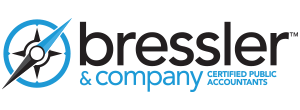5 Steps to Stronger Cash Flow Management
Watching businesses deal with recent business conditions reveals that some are struggling for survival while others are ‘going gangbusters’. Businesses at both of these extremes share one priority… which is to carefully manage cash.
Here are recommendations to help you avoid risk and make the most of your cash resources.
1. Finance Processes Matter
It sounds obvious… but some organizations still lose invoices, miss orders and have erratic policies related to cash collection. A small investment of time leads to procedures that minimize errors and increase consistency.
Automation technology is another sensible investment to help you invoice faster, manage multiple currencies, allow various payment options, minimize debtor days, and track accounts receivable. It’s best to get a handle on your business processes and unique needs BEFORE investing in technology.
2. Profit ≠ Cash Flow
Businesses can have extended periods of profitability (where revenue exceeds expenses and tax) but be short of cash. That’s the bad news. The good news is that these ‘holes’ in cash are predictable especially where the business has been trading for some time. More good news is that there are ways to reduce the ‘hole’ by minimizing (or delaying) outgoing cash and increasing (or speeding up) incoming cash.
There’s even more good news… which is that once these dynamics are understood, policies can be implemented and management can generally focus on other things… like sales.
3. Increased Sales should PRECEDE Increasing Expenses
When a business experiences revenue growth, you are probably doing something right. You understand your customers and what they value. You’re offering products that meet their needs and offering them at a sensible price. You are operating the business in a way that customers can access and enjoy your products. In this case, you may want to invest more to accelerate the growth or expand the business.
Sometimes management decides to ‘take a bet’ and grow expenses BEFORE you have validated your business proposition in the market. That’s fine… but this is not growth. It is an investment based on the hope that your business analysis is robust and you will realize positive returns. In many cases, these returns WON’T be realized.
Back to cash. As one of your most precious resources, you don’t want to risk available cash reserves lightly. A better way is to generate cash through sales AND THEN invest in growth. Make customer acquisition your focus.
4. “Neither a Lender nor a Borrower be…”
Where possible, avoid taking on debt. There are exceptions when the low ‘cost of capital’ justifies using external funds to create business value. But don’t make this a habit and analyze the options carefully.
Likewise, deny credit. This can become a habit with ‘standard credit terms’ common in some industries. ‘But all my competitors offer credit terms’, you say? Consider being the first and analyze carefully what will happen. If you absolutely need to offer credit terms, develop credit policies such as:
- Reference checks
- Third-party reports
- Asking clients if they can really pay your bills on time? Don’t assume
- Viewing a client’s financial statements
- Asking for payment upfront (even if it’s a small percentage of the total value)
- Research via the Internet
5. Discounting is not a long-term solution
Discounting is an intelligent business strategy but NOT to fill a cash flow ‘hole’. A glut of new clients may be attractive, but sooner than later you need to pay the bills to provide your products or services. If you have a good set of products already, clients will probably continue buying them even at the list price and so offering a discount is leaving good money on the table.
A better strategy may be to offer discounts for clients when they pay upfront, or when they choose to pay you monthly (or early).
Conclusion
Cash flow is the bedrock of every business. Develop attention to detail around cash and a set of policies and processes (and automation) which ensure stellar cash management. This is not a nice-to-have but, for many businesses, a matter of survival. Give us a call to help you get going. Call us at 559.924.1225.




